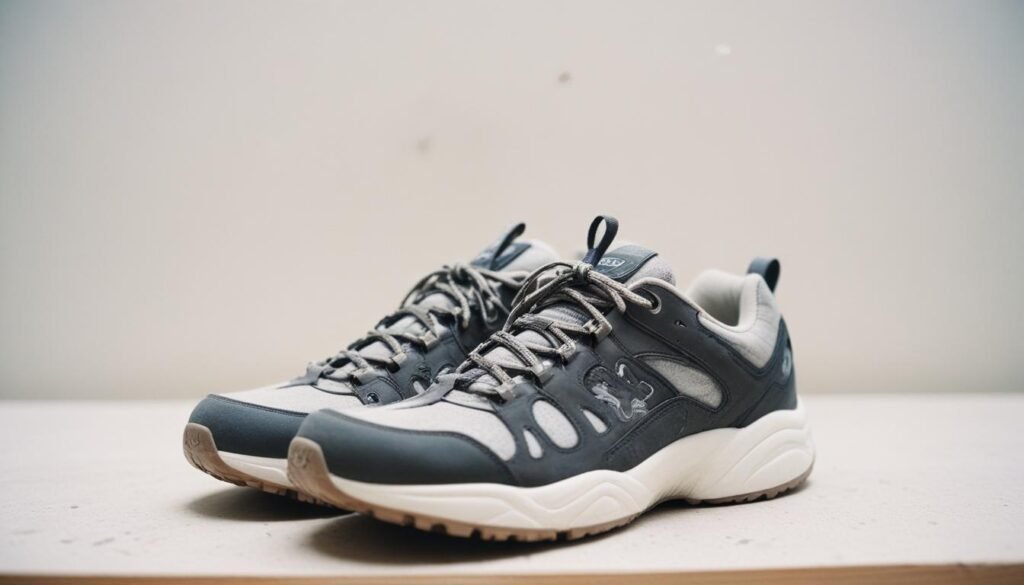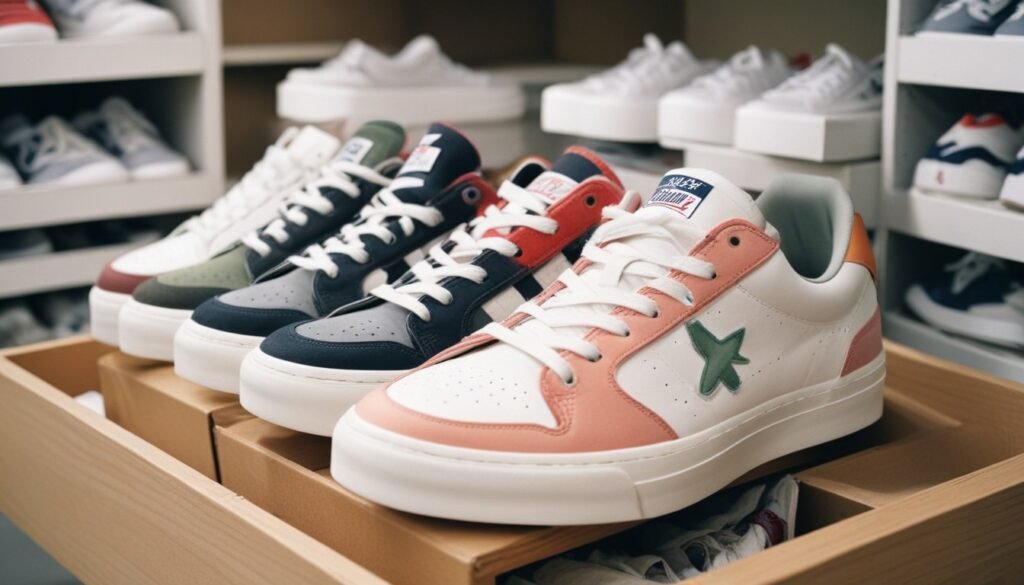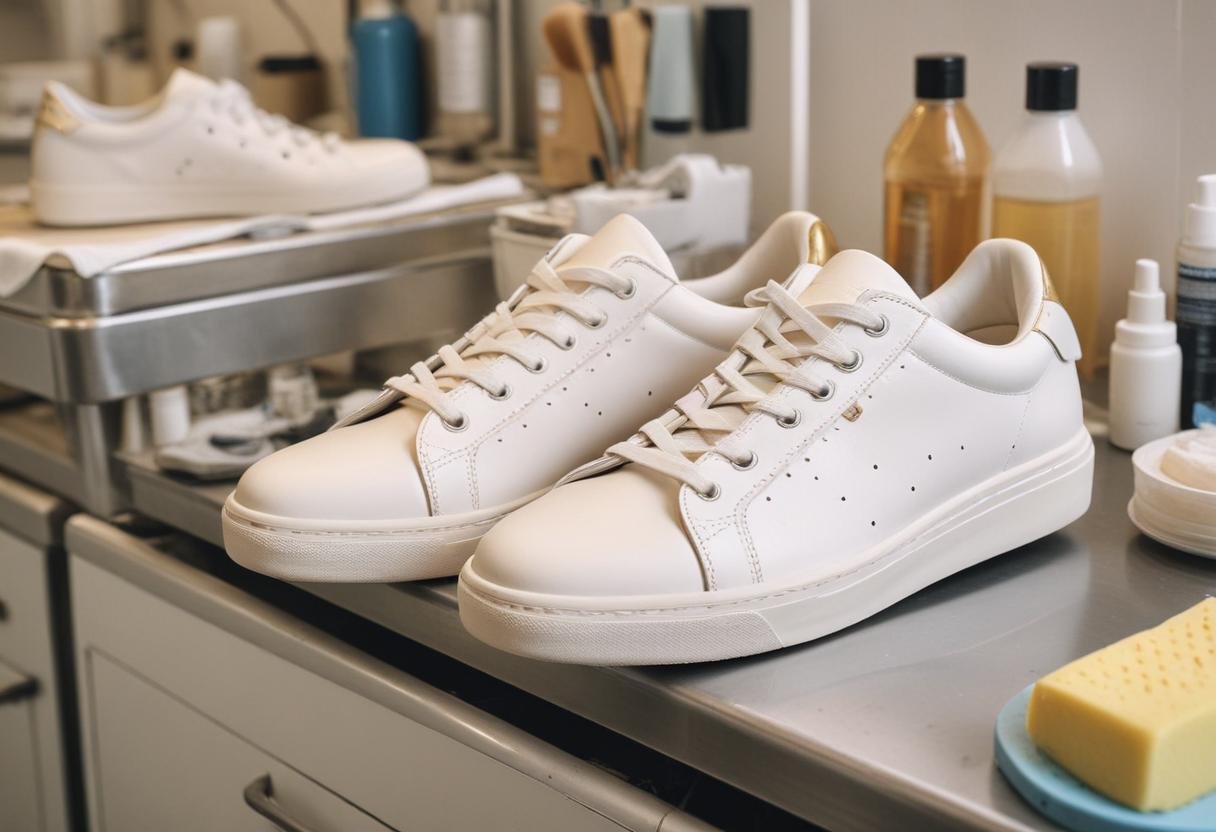Ultimate Guidance for Cleaning Your Sneakers
Sneakers have evolved from sporting footwear to become a fashion statement for people of all ages. Whether you’re a sneakerhead with a large collection or someone who relies on a reliable pair for everyday use, keeping your shoes clean is critical to preserving their beauty and lifespan. Dirt, dust, and unpleasant odors can develop over time, causing even the most elegant shoes to appear old.
But do not be afraid! Cleaning shoes is simpler than you would think, and you don’t have to be an expert to achieve outstanding results. This article will bring you through the step-by-step process of cleaning sneakers to keep them looking fresh and new. We’ll go over everything from basic hand washing techniques to utilizing a washing machine, as well as recommendations for dealing with tough stains and odors. By the conclusion of this tutorial, you’ll have all the information you need to keep your shoes in excellent shape and ready to go out in style.
Understanding the Importance of Sneaker Maintenance
Maintaining your sneakers is about more than simply appearance; it’s about increasing the life and usefulness of your footwear. Regular cleaning and good care prevent the accumulation of dirt, grime, and germs, which can lead to unpleasant smells and material damage. Clean shoes also retain structural integrity, ensuring that your feet receive the necessary support and comfort. Furthermore, well-maintained shoes may improve your entire appearance and raise your confidence, whether you’re hitting the gym, heading to work, or going for a casual stroll. By devoting time to sneaker care, you safeguard your investment and guarantee that your favorite shoes stay fashionable and comfortable for years to come.
Preparing for Sneaker Cleaning
Before beginning the cleaning procedure, appropriate preparation is essential to achieve the best results and minimize any harm to your sneakers. Begin by gathering all required equipment, including a soft brush, mild detergent, clean towels, a toothbrush for comprehensive scrubbing, and any cleaning chemicals appropriate for the material of your shoes.

It’s critical to read the manufacturer’s instructions for any special care suggestions, since various materials like leather, suede, or canvas may necessitate different cleaning techniques. Remove the laces and insoles so they may be cleaned individually and properly. Preparing your workstation by placing down old towels or newspapers will help keep it neat and make cleanup easy. Setting the stage appropriately will offer a smoother, more successful cleaning experience while preserving the quality and beauty of your footwear.

Gathering Necessary Supplies
Gathering the necessary equipment is the first step toward a complete and successful shoe cleaning procedure. You’ll need a soft-bristled brush or an old toothbrush to remove grime without hurting the surface.
A light detergent or specialist sneaker cleaner is required to remove stains and filth; avoid strong chemicals that may ruin the fabric or color. A microfiber towel or sponge can help you clean and dry your shoes without leaving lint behind. For more thorough cleaning, keep a magic eraser on available, which is especially excellent for persistent scuffs and stains on rubber soles. Make sure you have a basin of warm water to combine with your cleaning solution.
Checking Manufacturer Instructions
Before you start cleaning your shoes, read the manufacturer’s directions to minimize damage and verify you’re using the proper cleaning procedures.

These instructions are usually located on the shoe’s label, packaging, or the brand’s website. They provide detailed instructions for the materials utilized and the suggested care measures. For example, some shoes may have delicate textiles that must be hand-washed with mild detergent, whilst others may be sturdy enough for a soft cycle in the washing machine. Ignoring these recommendations might cause color fading, material shrinkage, and even structural damage.
Methods for Cleaning Sneakers
Method 1: Cleaning Shoes by Hand Washing

Step-by-step sneaker cleaning process, starting with removing laces and inserts.
Step 1: Removing Laces and Inserts
Remove the laces and insoles from your sneakers. To clean them individually, soak them in warm water mixed with mild detergent.
Step 2: Gentle Scrubbing with a Soft Brush
Scrub the outside of the sneakers with a gentle brush soaked in soapy water. Focus on filthy areas and make circular strokes to remove grime.
Step 3: Cleaning the Soles
Scrub the soles with a harder brush or magic eraser to remove any dirt that has clung to them. Pay attention to the treads and remove soap with a wet towel.
Step 4: Air Drying
Blot any excess moisture from the shoes with a dry towel. Allow them to air dry naturally, away from direct sunshine and heat, to maintain their form and substance.
Method 2: Cleaning Your Shoes Using of Washing Machine

Using a Washing Machine
Step 1: Preparing Sneakers for Machine Wash
Laces and insoles should be removed before to machine cleaning. Place shoes in a mesh washing bag to keep them safe during the wash cycle.
Step 2: Choosing the Right Cycle and Detergent
To avoid damage, set the cycle to mild and use cold water. To keep the fabric in good condition, use a gentle detergent designed for shoes.
Step 3: Washing and Drying Process
To balance the load, place the shoes in the washing machine among similar-colored towels. After washing, air dry them naturally, avoiding direct sunshine or heat sources to prevent shrinkage or material damage.
Cleaning Specific Types of Sneakers
Cleaning Canvas Sneakers
To retain the texture and color of canvas shoes, use a moderate cleaning method. Begin by removing the laces and insoles and soaking them separately in warm water with mild detergent. Create a soapy solution for the shoes by combining a tiny bit of detergent and water. Scrub the outside of the shoes in circular motions using a soft-bristled brush or sponge, paying special attention to areas with stains or dirt accumulation. To avoid fabric weakness, do not oversaturate the canvas.

To remove stubborn stains, apply a mixture of baking soda and water and gently scrape before washing. Once washed, wipe away any leftover soap with a moist towel and let the shoes air dry naturally. Canvas shoes should not be machine washed since it may shrink or harm the material. Regular maintenance and spot cleaning can keep your canvas shoes looking good and extend their life.

Cleaning Leather Sneakers
Cleaning leather shoes demands special care to maintain their exquisite appearance and durability. Begin by removing the laces and insoles, then treat them separately as needed. To clean the shoes, use a soft cloth or brush to remove surface dirt and dust. Next, make a solution of mild soap or leather cleanser diluted with water.
Dampen another soft cloth with the solution and carefully wipe off the shoes, concentrating on one part at a time. To remove stains and filth from leather, employ a gently, circular motion rather than soaking it. To remove ongoing spots, use a professional leather cleaner or vinegar mixed with water gently. After washing, wipe the shoes down with a clean, wet cloth to eliminate any residue. Allow them to air dry naturally, away from direct sunshine and heat, then finish with a leather conditioner to keep them supple and shiny. Leather shoes will look better and last longer if they are cleaned and conditioned on a regular basis.
Cleaning Suede or Nubuck Sneakers
To prevent ruining the exquisite texture of suede or nubuck shoes, clean them gently. To begin, use a suede brush or a soft-bristled toothbrush to carefully brush away any surface filth or debris. Work in one direction to keep the material’s nap intact.

To remove stains, just dampen a clean cloth with water and a tiny bit of vinegar or specialist suede cleaner. Blot the stain rather than rubbing it, as rubbing might cause further harm to the cloth. Allow the shoes to air dry naturally. Once totally dry, use the suede brush to restore the nap and texture. To prevent further stains, follow the manufacturer’s recommendations when spraying suede protection spray. Regular care, including gentle cleaning and preservation, will help keep your suede or nubuck shoes looking great and extending their lifespan.
Tips for Tough Stains and Odors
Dealing with Mud and Grass Stains
To remove mud and grass stains from shoes, take immediate action and use the proper cleaning method. Allow the muck to thoroughly dry before attempting to clean. Once dried, use a soft brush or cloth to remove as much muck as possible. To remove stubborn stains, use a tiny amount of mild detergent and warm water to make a soapy solution. Dampen a cloth or sponge with the solution and dab it on the stain, moving from the outside in to the center to prevent it from spreading. Scrubbing too forcefully might cause fabric damage.
Rinse the cloth and repeat blotting until the stain is removed. To remove grass stains, apply a mixture of baking soda and water to the afflicted area, let for a few minutes, then gently scrub with a soft brush before washing. After washing, use a clean, moist cloth to remove any residual soap or residue. Allow the shoes to air dry naturally, and repeat the process as needed until the stains are fully gone.


Removing Gum or Sticky Residue
To prevent harming the material, use a smart approach while removing gum or sticky residue from sneakers. Start by hardening the gum or residue by placing ice cubes or a freezer pack immediately on the afflicted region for several minutes. Once firm, carefully scrape off the gum with a blunt-edged object, such as a butter knife or credit card, being careful not to harm the surface. Alternatively, apply a tiny bit of peanut butter or an adhesive remover on the residue and let it stay for a few minutes to loosen it up.
Wipe away the gum or residue using a clean cloth or paper towel, continuing as needed until all residue is gone. Finally, scrub the area with a mild detergent solution and water to remove any sticky remains. Allow the sneakers to thoroughly dry before wearing them again. This procedure eliminates gum and sticky residue without damaging your footwear.
Addressing Persistent Odors
Persistent smells in shoes are easily addressed with a few easy techniques. Begin by removing the insoles and laces from your sneakers and letting them air out separately. Sprinkle baking soda inside the sneakers and let overnight to absorb smells.

Alternatively, use dryer sheets or activated charcoal pouches inside the sneakers to absorb odors. For a more thorough clean, use equal parts water and vinegar or use a specialist shoe deodorizer spray to softly spritz the inside of the shoes Let the sneakers air dry fully before restoring the insoles and laces. Regularly rotating your footwear and keeping them in a well-ventilated space will also help prevent smells from resurfacing. By following these procedures, you can keep your shoes smelling fresh and ready for use.

Maintaining Sneaker Quality Post-Cleaning
To keep clean shoes in good condition, they must be stored properly. To avoid mold and mildew formation, first, ensure that your sneakers are dry before storing them.
Avoid keeping them in plastic bags or airtight containers, as they can retain moisture and produce unpleasant aromas. Instead, use airy storage solutions like shoe boxes with ventilation holes or cloth shoe bags. Keep shoes in a cool, dry area away from direct sunlight, which can fade colors and damage materials over time. When stacking sneakers, avoid adding heavy things on top that may damage the contour of the shoes. Check your sneakers regularly to ensure they are clean and dry, and try placing shoe trees or crumpled paper inside to help keep them in shape. By correctly keeping your shoes, you may extend their life and keep them looking great for longer.
Periodic Maintenance and Spot Cleaning
Periodic maintenance and spot cleaning are essential for maintaining sneakers in good condition in between comprehensive cleanings. Inspect your sneakers regularly for dirt, stains, and scuffs and repair them as soon as possible to avoid accumulation. For spot cleaning, use a light cleaning solution that is suited for your shoes’ material.

Dab a cloth or sponge in the solution and gently wipe the damaged area, being careful not to scrub too hard, since this might harm the fabric. To remove harder stains, use a soft-bristled brush or toothbrush in combination with the cleaning solution. After spot cleaning, wipe off the area with a clean, moist cloth to eliminate any leftover residue and let it air dry naturally. In addition, keep your shoes clean by brushing off dirt and debris regularly and storing them correctly when not in use. You can keep your favorite shoes looking good and last longer if you incorporate regular maintenance and spot cleaning into your regimen.
Common Mistakes to Avoid
Using Harsh Chemicals
Using strong chemicals to clean shoes might cause unforeseen damage and limit their life. Bleach, powerful detergents, and abrasive cleansers are all examples of harsh chemicals that may remove protective coatings, damage materials, and fade or change colors. They may also leave residues that irritate the skin or produce unpleasant scents. Instead, use moderate, gentle cleaning solutions designed exclusively for the material of your sneakers. These products successfully remove dirt and stains without damaging the fabric or leather. When in doubt, always consult the manufacturer’s cleaning instructions to ensure you are using safe and proper cleaning procedures.

Common Mistakes to Avoid for cleaning the sneakers.
Overexposure to Water
Overexposure to water can harm shoes, particularly those made of sensitive materials such as suede, nubuck, or some types of leather. Excessive water exposure can cause certain materials to twist, shrink, or change form. Furthermore, extended exposure to water can degrade the adhesives used in the manufacture of shoes, resulting in sole separation or structural damage. To minimize these concerns, restrict the amount of water used during washing and ensure that shoes are dried quickly and correctly after cleaning.
To avoid saturation in water-sensitive textiles like suede or nubuck, use a small amount of water and gentle cleaning procedures. To ensure the quality and lifespan of your shoes, always clean and dry according to the manufacturer’s guidelines. By avoiding excessive water exposure, you can keep your shoes look and structural integrity for extended periods of use.
Ignoring Drying Guidelines
Ignoring drying recommendations for shoes might have unforeseen repercussions and reduce their quality. Improper drying techniques, such as utilizing direct heat sources like hairdryers or putting shoes near radiators, can cause materials to shrink, fracture, or lose form. Furthermore, high heat might harm the adhesives used in the manufacture of shoes, resulting in sole separation or other structural concerns. Air drying is frequently advised for most shoe kinds, enabling them to dry naturally at ambient temperature. Place shoes in a well-ventilated area away from direct sunlight to avoid color fading and material damage. Following the manufacturer’s drying requirements for your shoes guarantees that they retain their integrity and attractiveness, extending their lifespan for future usage.
More from Blogs
Conclusion
Cleaning your sneakers regularly not only improves their appearance but also increases their longevity. By following these complete cleaning techniques and advice, you can keep your beloved shoes looking new for longer. Proper maintenance entails utilizing the appropriate cleaning products, such as gentle brushes, light detergents, and soft cloths, which are customized to the material of your sneakers, whether they are leather, suede, canvas, or mesh. Before cleaning, remove the laces and insoles, brush off any excess debris, and use suitable cleaning procedures for each material. Regular cleaning avoids dirt accumulation, lowers wear and tear, and preserves the shoes’ original appearance and feel, ensuring they last for years.
FAQs
- How often should I clean my sneakers?
Regular cleaning is advised, ideally after 3-4 wears or anytime they become unclean.
- Can I clean my sneakers in the dishwasher?
It is not advised since the heat and detergent might harm some fabrics.
- Should I use bleach to clean white sneakers?
No, bleach may yellow cloth; instead, use a mild cleaning.
- Can I put my sneakers in the dryer?
To avoid damaging adhesives and materials, air dry them instead.





Custom Rubber Stamps: Create Online and Get Fast Delivery
stamp creator online [url=https://www.stamp-maker-online.ru]https://www.stamp-maker-online.ru[/url] .